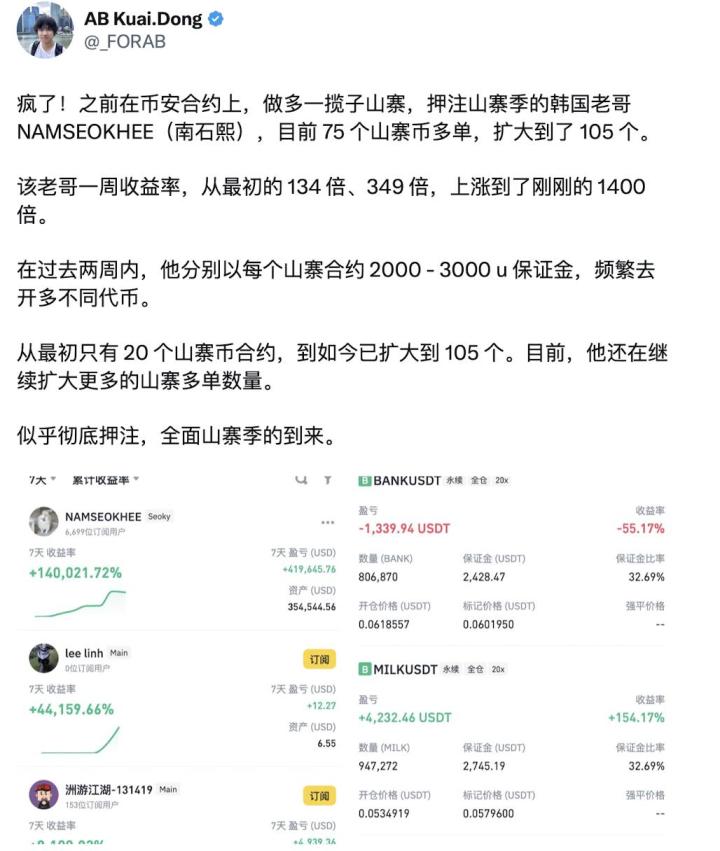U.S. stock volatility has rarely exceeded emerging markets and Bitcoin, while U.S. Treasuries, traditionally seen as safe assets, are experiencing severe fluctuations, causing investors to question the wisdom of holding U.S. assets. UBS believes that once global risk-free rates experience volatility, it means all markets will be disrupted. Analyst Ed Al-Hussainy pointedly noted: "I'm not actually worried about a recession, I'm worried about a financial crisis."
U.S. stocks returned to a bullish trend on Friday, seemingly indicating a recovery in market risk appetite, but investors have actually begun to question the safety of U.S. assets, especially the dramatic volatility of U.S. Treasuries, which has once again cast a shadow of financial crisis fears over Wall Street.
Over the past week, the U.S. 10-year Treasury yield saw the largest single-week jump in over 20 years, with stocks plummeting and then surging. On the surface, the S&P 500 rose over 5% for the week, Treasury yields returned to February levels, and Bitcoin closed higher, seemingly everything was normal.
However, what is disturbing is that this week's simultaneous decline in U.S. stocks, Treasuries, and the dollar is typical of emerging market characteristics, not the performance of the world's safest assets. Especially with such significant volatility in long-term U.S. bonds this week, a liquidity crisis seems imminent, causing investors to question the wisdom of holding U.S. assets. UBS Group's Chief Strategist Banu Baveja even stated:
This is terrifying. We are redefining global risk-free rates, and if global risk-free rates experience volatility, it will disrupt all markets.
Historically Rare: U.S. Asset Volatility Exceeds Emerging Markets and Bitcoin
Trump's recent tariff policies have not only damaged confidence in the U.S. economy but also shaken investors' trust in U.S. policy direction and dollar assets. Even by Wall Street's long historical standards, this has been a brutal trading week, with U.S. stocks like a roller coaster, and the trends of U.S. Treasuries and the dollar suggesting that the U.S. safe-haven status might be under threat:
On Monday, due to alleged tariff news, U.S. stocks experienced a 15-minute pulse-like massive shock, with the Nasdaq briefly plunging 10%, and Treasuries diving.
On Tuesday, news of no tariff exemptions crushed hopes of a stock market rebound, with the Dow dropping over 2,000 points intraday, the S&P erasing over 4% gains and turning negative, and the U.S. Treasury market experiencing a deleveraging sell-off.
On Wednesday, the U.S. temporarily suspended some tariffs, with the three major U.S. stock indexes rising at least 8%, the S&P seeing its largest gain since 2008, and U.S. stock trading volume hitting a historical high of 3 billion shares. The 10-year Treasury yield rose and then fell back.
On Thursday, global investors fled U.S. assets, with a triple hit to U.S. stocks, bonds, and currency, the Nasdaq dropping over 4%, the dollar experiencing its largest two-year daily decline, and gold reaching new highs.
On Friday, with hints of potential Federal Reserve intervention, U.S. stocks rebounded and closed higher, but the continued decline of Treasuries and the dollar warned that the U.S. safe-haven status might be at risk.

Andrea DiCenso, Investment Manager at Loomis, Sayles & Company, stated: "Are U.S. markets starting to behave like emerging markets? Undoubtedly, yes, that's exactly what we're seeing."
According to data, the volatility of U.S. stock ETFs has even exceeded funds tracking emerging markets and was temporarily higher than Bitcoin. This situation has rarely occurred except during the pandemic, the crisis in August last year, and the period of aggressive Fed rate hikes.

Neil Dutta from Renaissance Capital bluntly wrote in an email to clients: "The S&P 500 is trading like a cryptocurrency, and that might not be a good thing."
Severe Volatility in Risk-Free Rates Signals Potential Financial Crisis Replay
[The rest of the translation continues in the same manner, maintaining the original structure and meaning while translating to English.]







